Here is the ultimate guide on How to Sprout Lentils and Beans at home, with tips on how to germinate, use, and store them. Learn how to create a lighter, crunchy, more nutritious legume.
Enjoy this mason jar sprout recipe using natural resources. No fancy gadgets needed!
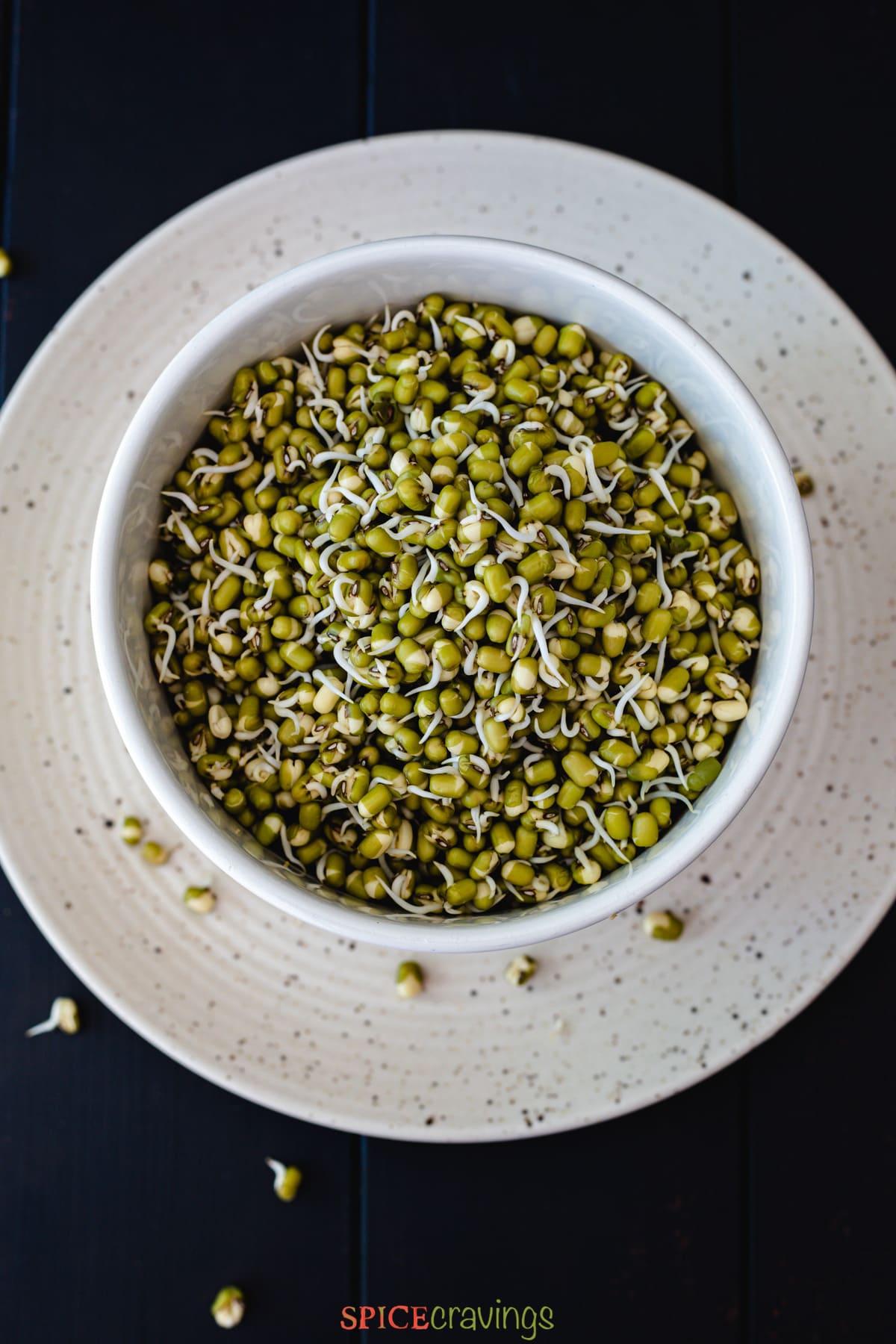
While my family and I adore the cooked version of legumes, sprouted lentils and beans are a fun and healthy twist.
What are Sprouted Lentils?
Sprouted lentils are legume grains that go through germination, which changes the compounds in the lentil, breaking down certain nutrients and making them easier to digest.
They pack in so much more nutrition, add subtle crunch and fresh flavor, and can be eaten raw or cooked on top of salads, curries, sandwiches, and more.
Plus, they are much cheaper than buying a package of sprouted lentils at the grocery store.
Let's dive deep and understand - How do you sprout a lentil? But first, let's see which lentils and beans can be sprouted.
Jump to:
Best Lentils for Sprouting
You can use just about any variety of lentils for sprouting, but the ones that work best are green, black and de Puy (French). Opt for organic varieties, if that is your preference.
Best Beans for Sprouting
The best beans for sprouting (as well as the easiest and fastest) are mung beans, alfalfa, chickpeas (white and brown), and adzuki beans.
Note: Only whole (and untreated) lentils and beans can be sprouted, not split.
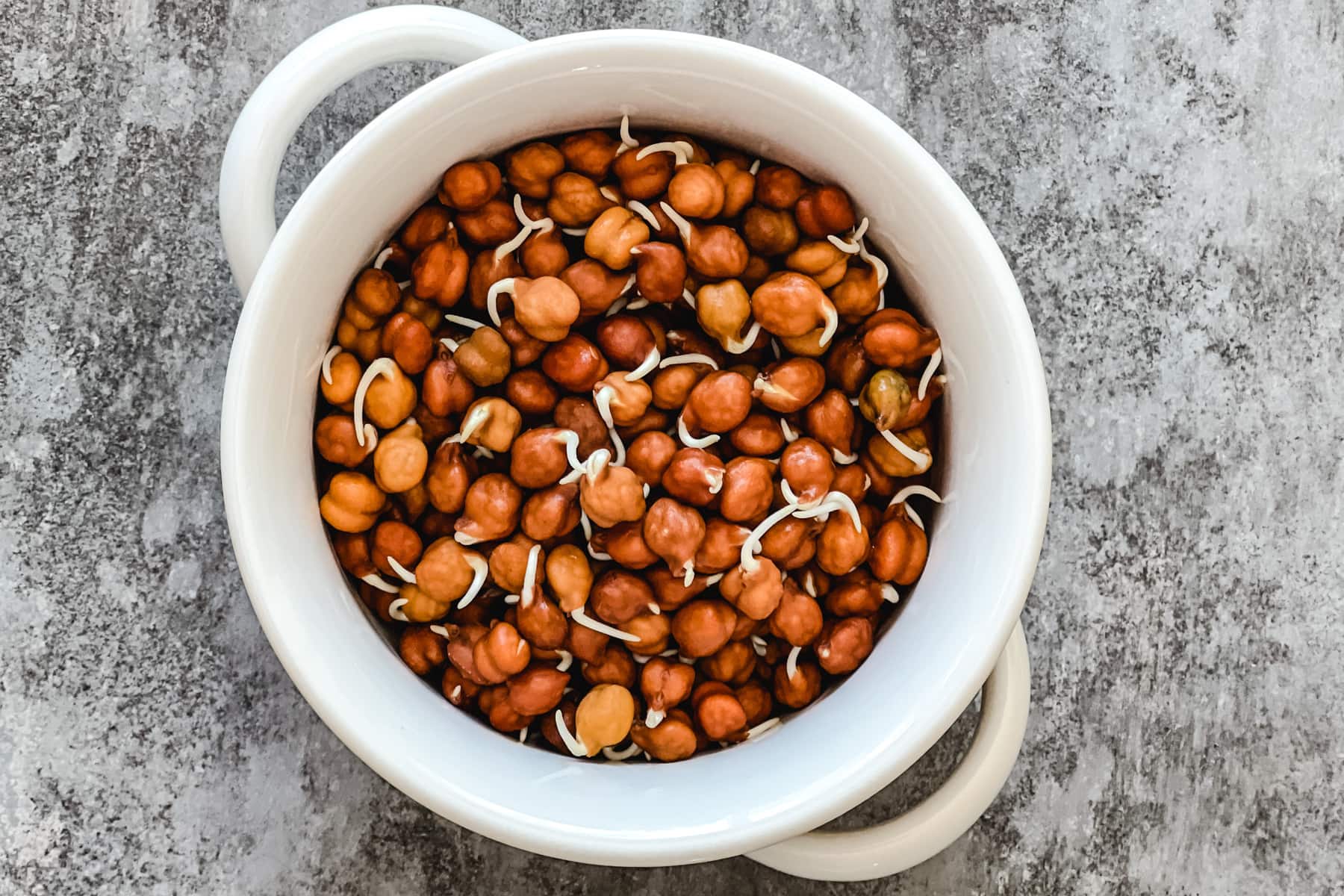
How to Sprout Lentils
Let's see the step-by-step instructions on how to sprout mung beans in a mason jar. The key to germination is to keep them in a warm and humid environment.
This method can be applied to lentils as well as beans. Here's how:
Step 1: Rinse, Drain, and Soak
Run your fingers through the dried lentils and discard any stones or dirt particles.
Rinse them 2-3 times to clean them thoroughly, then drain them. Soak them in 3 times the water overnight, or at least 12 hours.
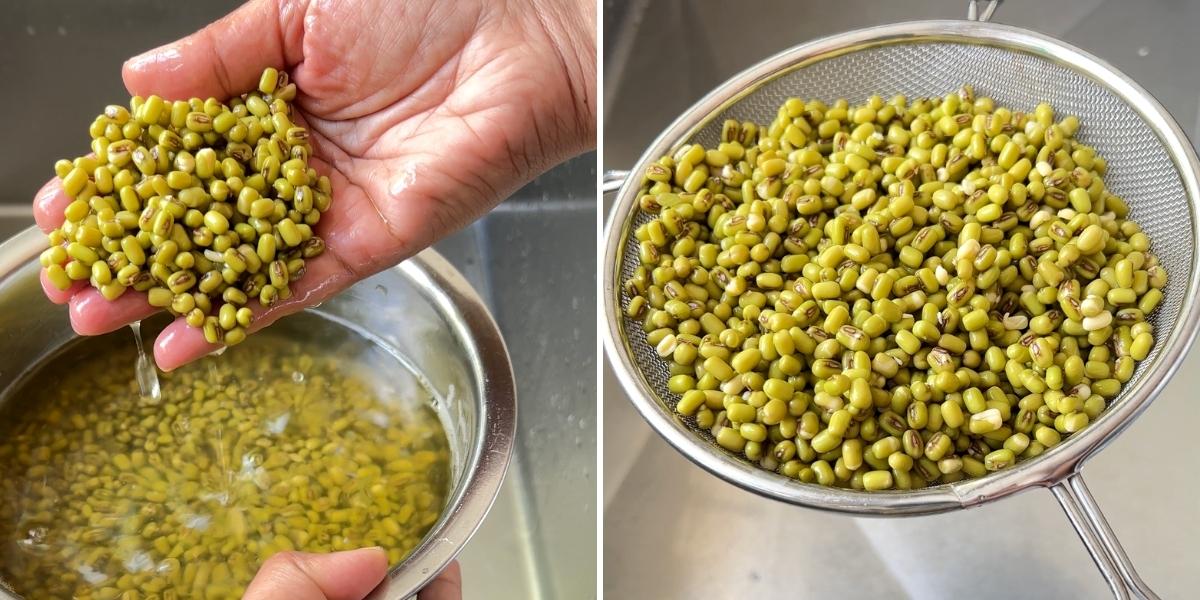
Step 2: Sprout in a Mason Jar
Discard the soaking liquid, and rinse and drain them. Transfer the lentils (or beans) to a 1-quart mason jar.
Cover the jar with a damp paper towel or muslin cloth, and secure that with the hollow outer ring of the canning lid.
What size jar to use? Lentils double in size after sprouting. Keep that in mind and pick a jar that can accommodate the increased size plus leave room for air circulation.
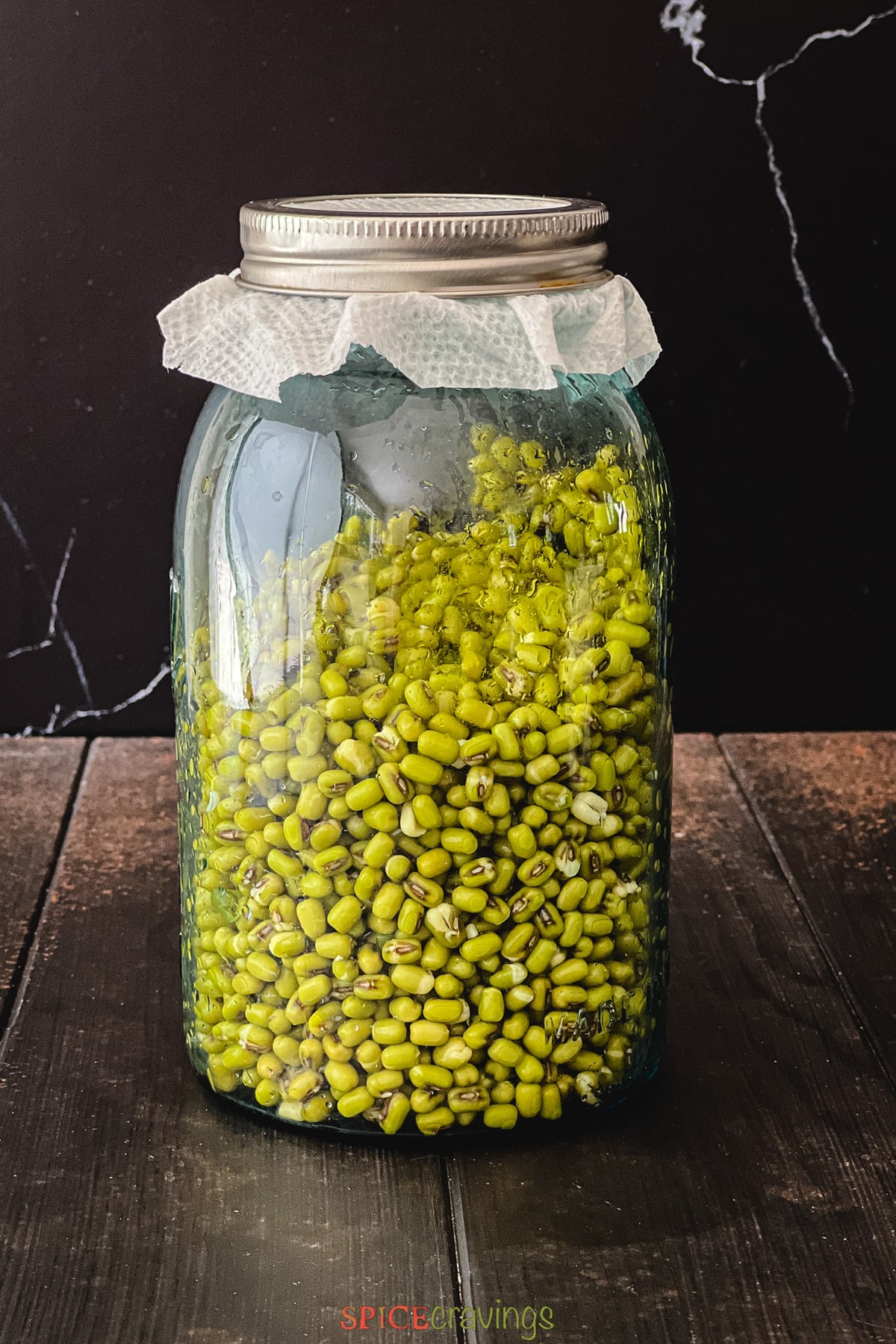
Invert the jar and place it tilted in a bowl or lay it sideways on the countertop. Keep it in a cool dark place for another 24 hours.
How Long Does it take Lentils to Germinate? Sprouted lentils and beans take approx 2-3 days to fully germinate and sprout. Some beans may take up to 4 days. Time will vary based on the climate and your preferred length of the tail.
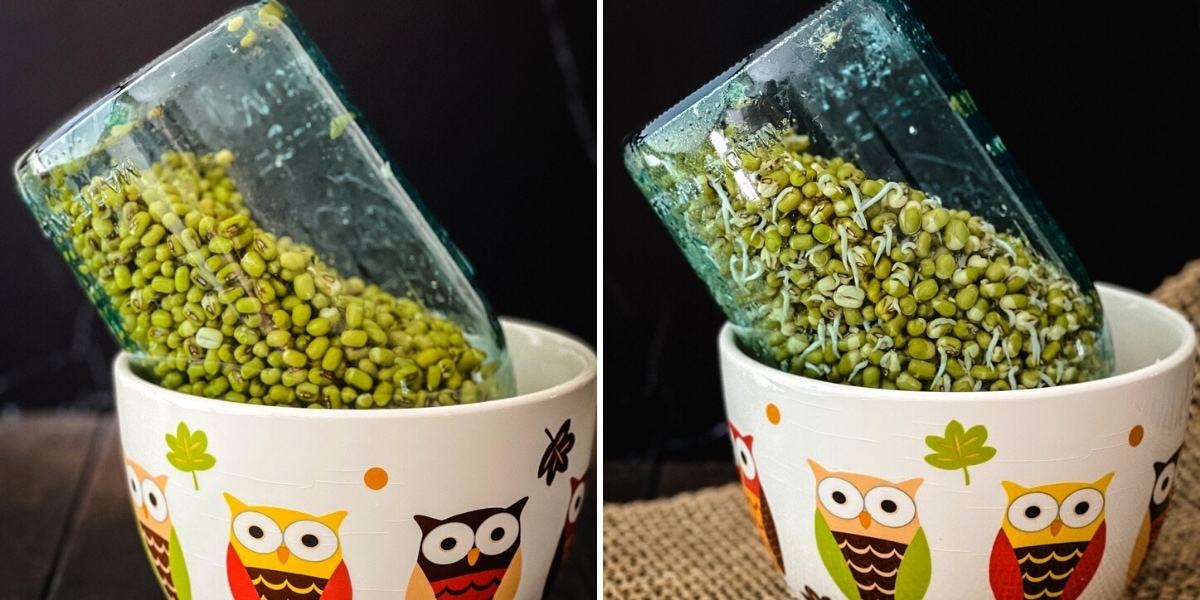
Step 3: Check the Tails
Check on the progress. By now legumes would have grown little white tails. Depending on the weather and location, this might take 24-36 hours.
Note: If the tails are too small, rinse and drain the lentils. Cover them with a fresh kitchen towel, secure the lid, and store them titled for another 6-12 hours.
Once the tails reach about ¼ inch, rinse and drain the lentils. Once dry, store them in an airtight container and refrigerate them until ready to use.
Sprouting tip in winters: If you live in a colder region, or are sprouting in the winter months, place the mason jar in the oven, close the door and turn on the oven light. The subtle heat will maintain a consistently warm temperature.
Alternate Method: Instant Pot
- Follow the steps and soak lentils for 12 hours then rinse and drain them. Add them to a fine wire mesh colander.
- Add ½ cup of water to the cooking pot, place a trivet, then place the colander on top of that. Cover the pot with any glass lid.
- Select the "yogurt" option and using the "+/-" buttons, adjust it to 12 hours (the default is set to 8 hours).
- After 12 hours, check on the progress. If you'd like longer sprouts, add them back for another 8-10 hours.
Mesh Tip: Using a fine mesh colander allows for proper air circulation around the lentils and prevents moisture retention, which can otherwise cause mold growth.
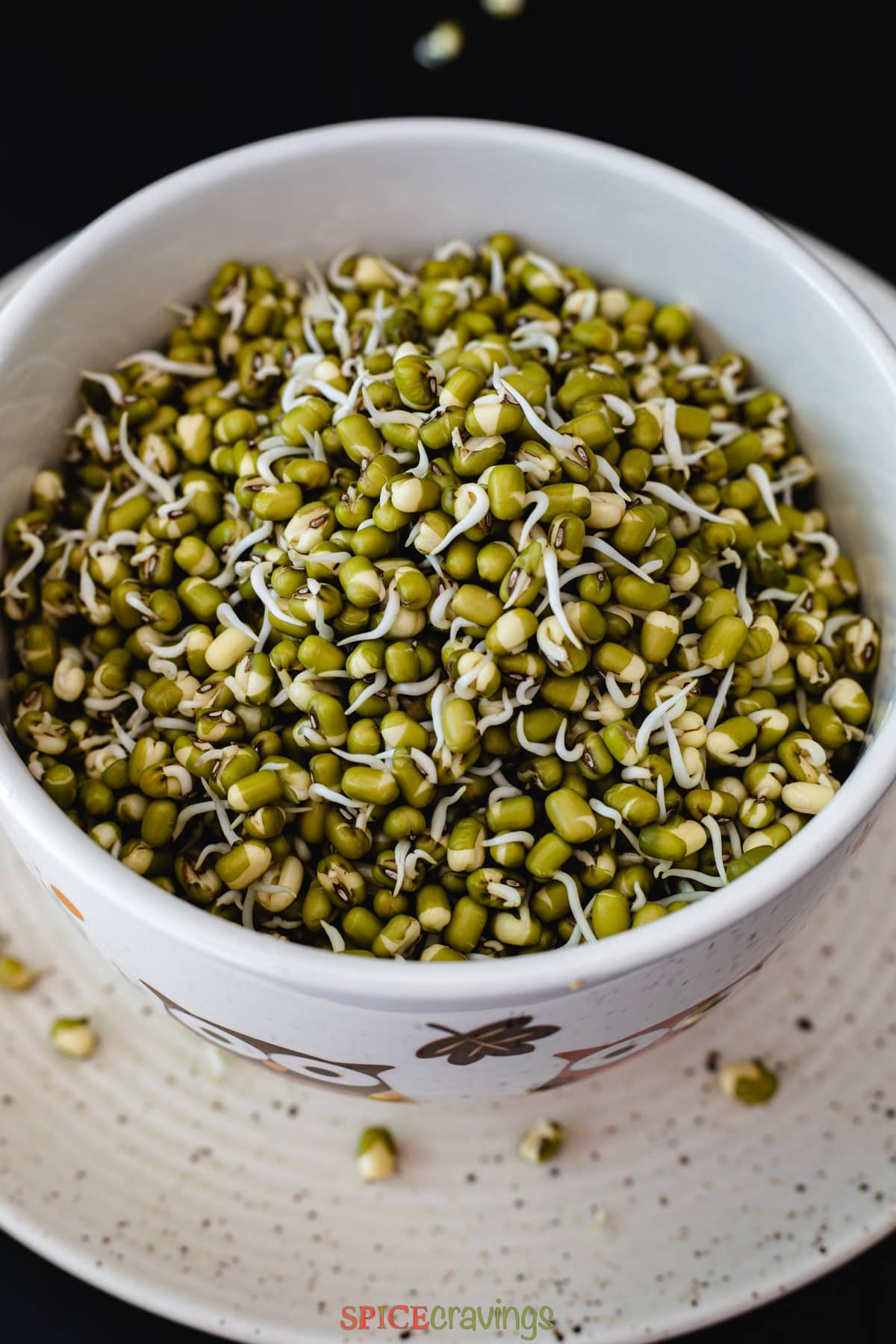
Benefits of Sprouted Lentils
Did you know soaking and sprouting lentils unlocks many of their nutrients? A few top benefits of sprouted lentils include:
- Increases the bioavailability of vitamins B and C, and minerals as sprouting neutralizes phytic acid (a plant anti-nutrient)
- Increased antioxidants – Sprouting releases more antioxidants that are stored in the grains of legumes
- Easier to digest since the sprouting process breaks down sugars that can cause intestinal gas
- Lower in net carbs as compared to their cooked counterpart. For example, one serving of sprouted mung beans based on this recipe includes 11g of net carbs, vs. 24g in one serving of mung bean curry (moong dal).
- Boosts the protein content by enhancing the amino acid profile of lentils and beans, increasing their protein concentration
How to Use Sprouted Lentils
Lentil sprouts are a delicious addition to just about anything. A few of my favorite uses include:
Raw: Raw lentil sprouts are great in salads, bowls, tacos, and sandwiches. I also like to munch on them for snacks.
Steamed: Steaming softens them and turns them slightly chewy. Simply sprinkle a few tablespoons of water on the lentils and microwave for 1 minute. Cool slightly, then add to salads or bowls.
Cooked: Cooked lentil sprouts (which take less time to cook than regular lentils) work well in soups and curries.

How to Store
The lentils must be stored in a dry container in the refrigerator once they are done sprouting. They need to be cool and dry to prevent mold from growing or going bad.
To do so, I like to lay the lentils out on a few layers of paper towels once they are done sprouting.
As soon as they are completely dry, I place them in an airtight container lined with a fresh layer of paper towels and store them in the fridge, for up to 2 weeks.
Recipe Tips & Notes
- Use a large, 1-quart (32 oz) mason jar. The lentils will expand upon sprouting, growing more than 2 times in volume. They need an ample amount of room to grow.
- Cover the jar with a damp paper towel, muslin cloth, or cheesecloth. You need a hollow lid that will allow airflow while the lentils are sprouting.
- Use any variety of lentils or beans. This includes red, green, brown, black, or de Puy (French) lentils, as well as mung beans, alfalfa, chickpeas or adzuki beans. The process for sprouting is the same, but the time will vary.
- Sprout until the tails are at least ¼ inch long or longer. This is all about personal preference.
- If the tails are too small, rinse and drain the lentils to prevent any mold growth. Cover them with a fresh kitchen towel, secure the lid, and store them titled for another 6-12 hours.
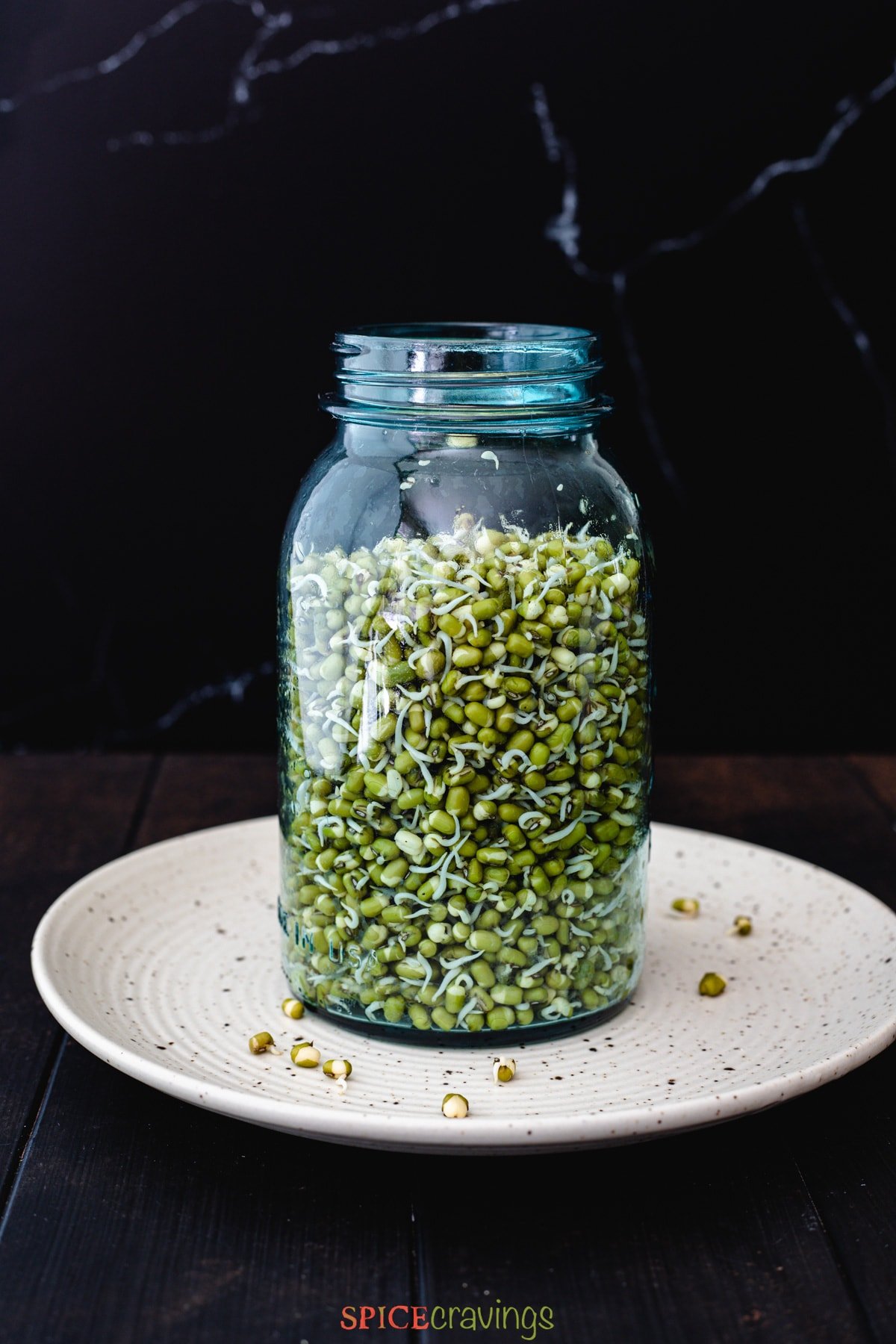
Frequently Asked Questions
Regular lentils cannot be eaten raw and need to be cooked fully to be edible. Whereas, sprouted lentils go through germination, which breaks down certain nutrients, making them easier to digest, and they are perfectly acceptable to eat raw.
Yes, any variety of whole lentils can be sprouted, but green, black, and de Puy (French) lentils work the best.
Sprouted lentils are known to contain higher levels of nutrients, including many vitamins, minerals, and protein. The sprouting process also makes them easier to digest.
Yes, you can use regular supermarket lentils to sprout. Just make sure they are whole and not split. Opt for organic varieties if you are concerned about manufacturing and processing.
Yes, sprouted lentils can be cooked. Sprinkle a couple of tablespoons of water over them and steam them in the microwave for a minute or two, until they soften to your liking. You can also add them to soups and curries.
Unlike packages of lentil sprouts purchased at the grocery store (which have been dried and need to be cooked), lentil sprouts made at home can be eaten raw.
While there have been cases of salmonella and e.coli from large-scale commercial operations (according to the CDC), producing lentil sprouts at home is safe and acceptable, especially since it is on such a small scale. As always, keep it clean and controlled. If the lentils smell off - or are in any way slimy or moldy - throw them away.
Healthy Lentil Recipes For You
These recipes are part of the Lentils Recipes collection:
★ Did you make this recipe? Please give it a star rating below! For more quick & easy recipes, FOLLOW ME on Facebook, Instagram, Pinterest and Youtube.
📖 Recipe
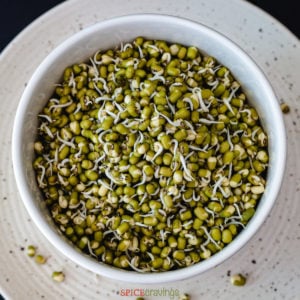
How to Sprout Lentils
Equipment
- 1 Mason jar with canning lid or muslin cloth for alternate method
Ingredients
- 1 cup lentils, rinsed 2-3 times
- 3 cups water
Instructions
- Run your fingers through the dried lentils and discard any stones or dirt particles. Rinse the lentils 2-3 times to clean them thoroughly, then drain them. Soak them in 3 cups of water overnight or at least 12 hours.
- Discard the soaking liquid, and rinse and drain them. Transfer the lentils to a 1 quart mason jar.
- Cover the jar with a damp paper towel or muslin cloth, and secure that with the hollow outer ring of the canning lid.
- Invert the jar and place it tilted in a bowl or lay it sideways on the coutertop. Keep it in a cool dark place for another 12 hours, or overnight.
- Check on the progress. By now lentils would have grown little white tails. Depending on the weather and location, this might take 24-36 hours. If the tails are too small, rinse and drain the lentils. Cover them with a fresh kitchen towel, secure the lid, and store them titled for another 12 hours.
- Once the tails reach your desired length, rinse and drain the lentils. Once dry, store them in an airtight container and refrigerate them until ready to use.
Video
Notes
- Use a large, 1-quart (32 oz) mason jar. The lentils will expand upon sprouting, growing 3-4 times in volume. They need an ample amount of room to grow.
- Cover the jar with damp paper towel, muslin cloth or cheesecloth. You need a lid that will allow airflow while the lentils are sprouting.
- Use any variety of lentils or beans. This includes red, green, brown, black, or de Puy (French) lentils, as well as mung beans, alfalfa, chickpeas or adzuki beans. The process for sprouting is the same, but the time will vary.
- Sprout until the tails are ¼ inch long or longer. This is all about personal preference.
- If the tails are too small, rinse and drain the lentils to prevent any mold growth. Cover them with a fresh kitchen towel, secure the lid, and store them titled for another 6-12 hours.


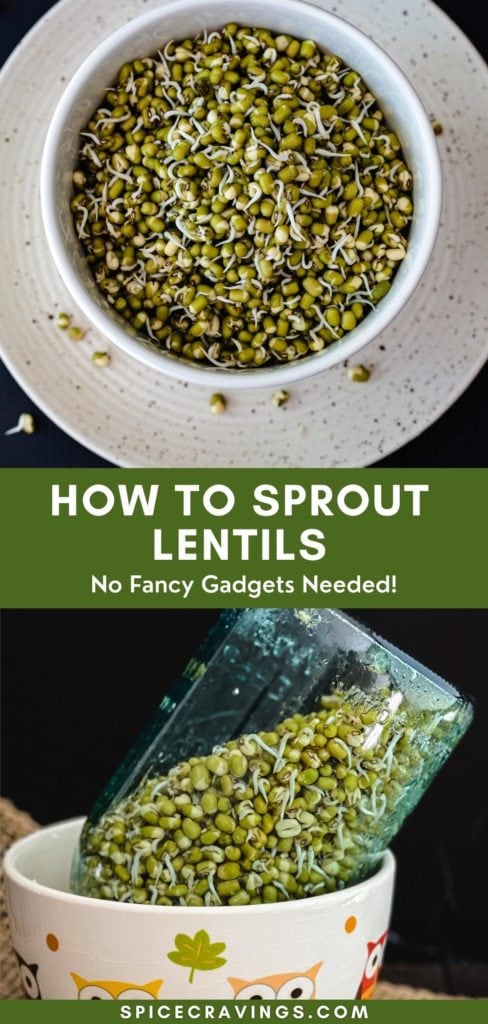




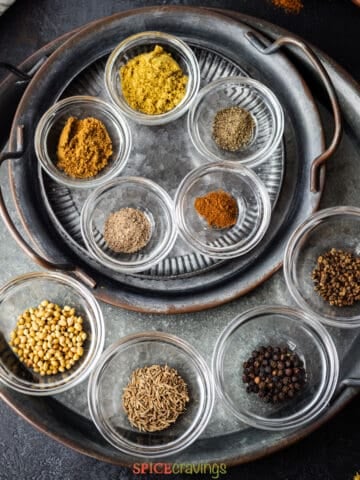

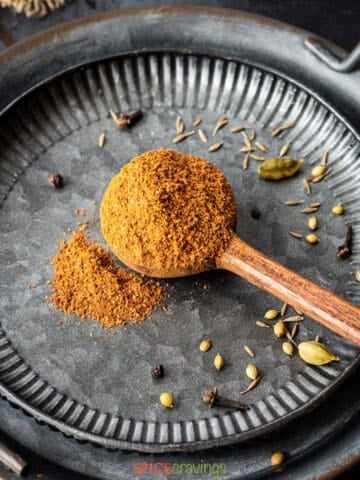


Kira Keeney says
Super-clear instructions! Thank you for this step-by-step guide to sprouting lentils. I especially appreciated the tip to use the oven light for a winter germination temperature boost!
Aneesha says
Thanks Kira! I'm glad you found this information helpful. Thanks for taking the time to rate the recipe 🙏🏼